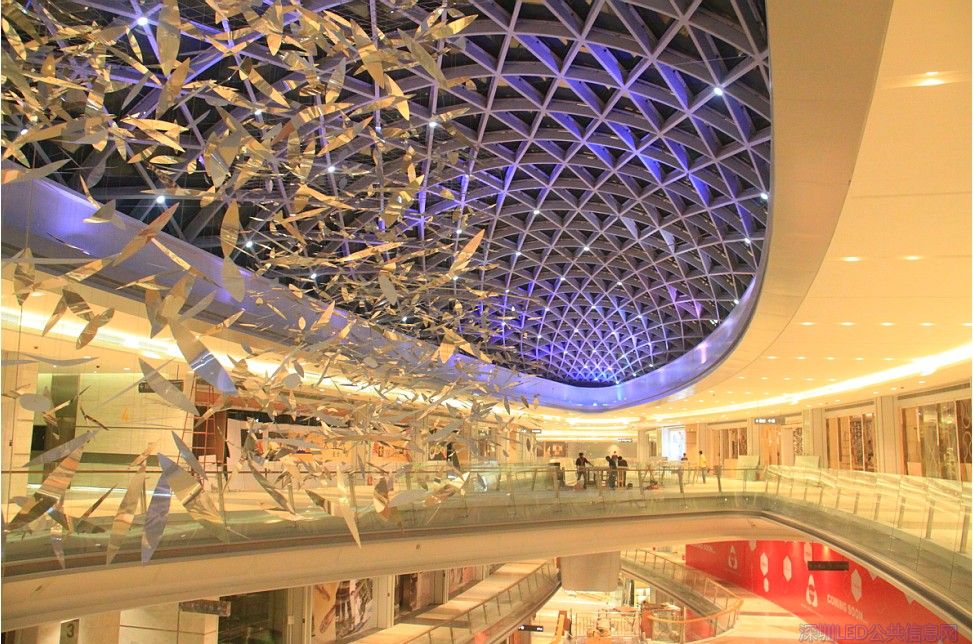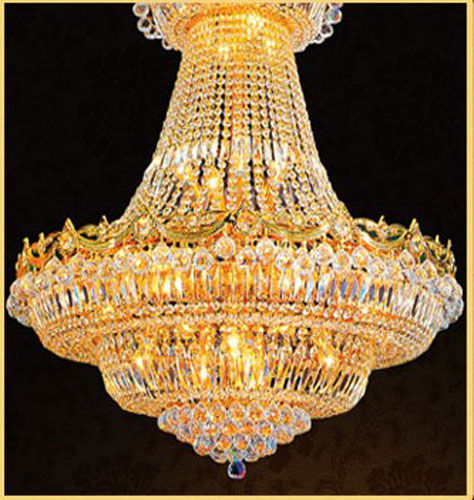Has great potential for development as a light source, LED’s long life, rugged construction, low power consumption and flexible dimensions, etc. by the people more and more attention in recent years, LED especially monochrome LED is widely used in large-screen, lights and landscape lighting. As LED technology continues to evolve, the white LED luminous efficiency, color rendering, color temperature and a single LED power and luminous flux LED module parameters such indicators continue to achieve new breakthroughs, people are looking forward to LED for lighting.

However, the white LED used in ordinary indoor lighting is also facing a number of challenges, such as single LED luminous flux is also difficult to meet the demand for general lighting, the unit cost is too high, the low light efficiency than energy-saving lamps, great color, stability is inadequate. Although research is gratifying, but to truly meet the lighting requirements to produce market-oriented products will take some time, which is LED R & D personnel, manufacturers and users inescapable fact. In this paper, lighting ergonomics, analyzes the current situation and development of white LED light environment and health indicators required for the normal difference between the promotion of LED interior lighting application process made some suggestions.
1, lighting ergonomics
Ergonomics Ergonomics is also called ergonomics or to “man – machine – environment” system as the research object, using measurement, statistics, analysis and other methods to study the “man – machine – environment” between the three elements of the system relationships to solve the system of human performance, health problems. In other words, ergonomics research dedicated to the design and * price of human needs, human capacity, human limits, and how various tasks, jobs, products, environments and systems coordination. Lighting ergonomics, is the study of how the design of light environment to meet human needs, to make people better and faster completion of the visual task or try to meet the needs of a comfortable and healthy.
Illumination environment should take full account of the needs of visual function to meet people, so that people can fit in a visual environment to work properly, which can be clearly seen; psychological needs but also to meet people that want to see comfortable. A recent study showed that light can affect the human body through the secretion of melatonin affect the body’s circadian rhythms and health. Therefore, considering the ergonomics of the environment should be good light from human vision, psychological and physiological needs, a number of factors into account, otherwise it will on people’s working efficiency, psychological or physiological cause adverse health effects.
2, white LED current development
2.1 light efficiency
LED since its inception in the 1960s, in order to improve the brightness of every 10 years, 30 times, 10 times lower prices “Hydes Law”-like pace. According to reports, the current white LED luminous efficiency of laboratory data has more than 100lm / W, and into the commercial area of ??high-power white LED has reached 40lm / W. With breakthroughs in key technologies, the future high-power LED light effect still has much room for growth, the highest may reach 150 ~ 200lm / W.
2.2 Flux
With the advent of high-power LED and packaging, cooling and other key technology breakthroughs, 5WLED commercialization process has taken shape, which makes the flux LED module has been greatly improved. From Nichia’s latest research data shows that power was 5.5W and 11W, respectively 250lm and 400lm luminous flux of high-power LED integrated module has been developed. This makes LED for general illumination process forward in a major step forward.
2.3 color temperature and color rendering
White LED color temperature and color rendering with white LED is closely related to the preparation of solutions. 1996 first used Nichia InGaN blue chip plus YAG (yttrium aluminum garnet) $ phosphor method for producing white LED. Since then, people using R, G, B three color chips mixed excitation light and near ultraviolet chip R, G, B three-color phosphor powder mixed light into the white LED.
Blue LED using YAG phosphor way plus its process is simple, low cost technique, preparation of white LED is the most common way, but its color rendering index is relatively low. Add some red and green phosphor phosphor can improve the color rendering index, though, but because of the red phosphor relatively low conversion rate, usually caused by the overall flux attenuation, namely light efficiency decline. Near-ultraviolet LED plus RGB trichromatic phosphor can theoretically get any color temperature and high color rendering index white LED, but for UV LED phosphor technology is not yet mature. Single-chip phosphor coating method of the phosphor coating techniques, it is generally 80 ~ 800K with a color temperature difference. Multi-chip LED is theoretically possible to get any color temperature and high color rendering white LED, but due to multi-chip LED forward voltage and light output are different, in addition they maintain the temperature characteristics and properties of light is not the same, and thus the circuit design requirements is higher, the current technology is not mature, large differences between modules color temperature.

3, considering the ergonomics requirements for white LED lighting
As previously described, considering illumination ergonomics people consider the lighting environment. Indoor environment for people living and working environment stays most of the time, so people on the indoor lighting needs of the environment is getting high. Can meet these requirements, the LED light source instead of traditional interior lighting of the key.
3.1 visual function needs
In order to meet people’s visual needs, namely to make people able to see clearly, which requires illumination environment with a certain level of illumination, illumination uniformity and color rendering.
To meet certain level of illumination, the LED requires a sufficient flux. Reading room with a small example, assume reading area 6m × 8m, then about 20000 ~ 30000lm flux in order to meet people’s normal reading. Without considering other factors, the application of high-power currently on the market 200lm particles 100 to 150 particles also need to be able to reach such an LED illumination requirements. Due to the current market products better light efficiency at 30 ~ 40lm / W or so, whether energy or cost, LED and energy-saving lamps can not compete or fluorescent. In addition, LED lighting optical design technology immaturity make the current LED lamps light distribution is not stable enough to reach a certain uniformity of illumination also requires a very high cost. However, a small area of focus for the lighting of the LED with a small power consumption to meet the visual needs, uniformity also relatively easy to meet. In terms of color, white LED current can basically meet the general needs of indoor activities.
3.2 psychological needs
In normal indoor work or activity, it requires not only get the satisfaction of visual function, but also requires a certain visual comfort, this is the people’s psychological needs illumination light environment, it requires the field of view can not have direct glare light environment or indirect glare, color temperature to the right, lighting layout should be comfortable. In the field of view requirements glare of white LED are both advantages and challenges. As the LED light point and a small beam angle, the light emission direction is easy to control, but on the other hand, the LED light intensity generally more concentrated at the maximum light intensity distribution is easily if mishandled to cause glare to the observer. Studies have shown that not only cause discomfort glare efficiency decline, but also cause visual fatigue and headaches and other adverse reactions. In addition, if the choice of RGB three-chip LED, although able to form any color temperature of white light, but the larger the field of view of the color difference will affect the overall comfort and aesthetics. If the selection of YAG powder blue LED plus the way, the basic color temperature is high. In order to have a good effect of the illumination, the color temperature of the light source must be selected and adapted to the requirements of illumination, Figure 1 shows the illuminance and color temperature corresponding to the comfort zone. Therefore, the higher the color temperature can also affect white LED interior lighting applications, because it requires a high illuminance appropriate to make people feel comfortable. On the other hand, LED flexible dimensions that LED lighting has been designed with a lot of space, we can fully meet the decorative requirements.
3.3 physiological needs
Indoor lighting people on physiological needs mainly for health needs. In addition to long-term UV radiation can cause skin adverse effects other than light affect the health of the other two ways are often overlooked by people, is a light through the visual impact on health, and the other is light through the circadian system affect health. With white LED for indoor lighting has two effects is closely associated retinal blue light through the hazardous effects and suppress the body’s secretion of melatonin circadian rhythms affect the body systems and health. UV damage usually occurs before the eye portion of the human eye, which can cause damage to the cornea. The Blu-ray because of its longer wavelength than UV light can reach the retina through a fundus; while the unit of energy in the visible range of the strongest, easy to burn the retina and the early formation of cataracts. On the other hand, the body’s secretion of melatonin by light effects, when melatonin secretion disorders is likely to cause confusion in the human circadian rhythm, cause cancer or other serious diseases.
In the region of 400 ~ 500nm, the energy distribution of this white LED has a distinct peak. Added after a certain amount of red phosphor can be reduced to some extent this peak, but the current widespread use of white LED and blue peaks of the blue region of the spectral sensitivity curves of retinal damage and affect the circadian rhythm system ganglion cells sensitivity to light curves have more overlap area, which can not but arouse our attention. And if using a UV LED and RGB trichromatic phosphor plus multi-chip white LED, these two effects can be ignored.
4, to promote white LED interior lighting applications
High-power white LED light effect though, the color and the single power has made great breakthroughs in the LED manufacturers are also constantly updated rapid momentum has been achieved. However, taking into account the ergonomic aspects, for the need to create a line with the Habitat lighting environment, LED is clearly still a long way to go. In order to promote LED more and more reasonably applied to indoor lighting, the following aspects are LED designers, producers and the users should be of common concern.
4.1 the importance of appropriate lighting design
Needs in terms of visual function, LED luminous flux and luminous efficiency is also difficult to meet the needs of a large area of ??general lighting. Thus, reasonable lighting design is applied to the LED interior lighting of the key. For example, the partial use of LED accent lighting, or the use of easy to control the characteristics of LED auxiliary lighting and dimming design. Design should be combined with visual function, psychological and physiological needs, weaknesses, creating a healthy and comfortable light environment.
4.2 emphasis on the LED, midstream and downstream of the close contact
Undoubtedly, LED on the upper and middle reaches of the development and application of LED technology has played a key role, but the downstream applications and demand for the LED also play a leading role on the middle reaches. Scientists, engineers, and designers should strengthen ties, the LED industry development more rational and humane.
4.3 Strengthening LED secondary optics design technology
LED lighting applications, a key technology is the LED secondary optics design technology, through the secondary optical design, to optimize the LED light distribution, while avoiding glare emitted from the LED light is more reasonable to achieve the lighting requirements.
